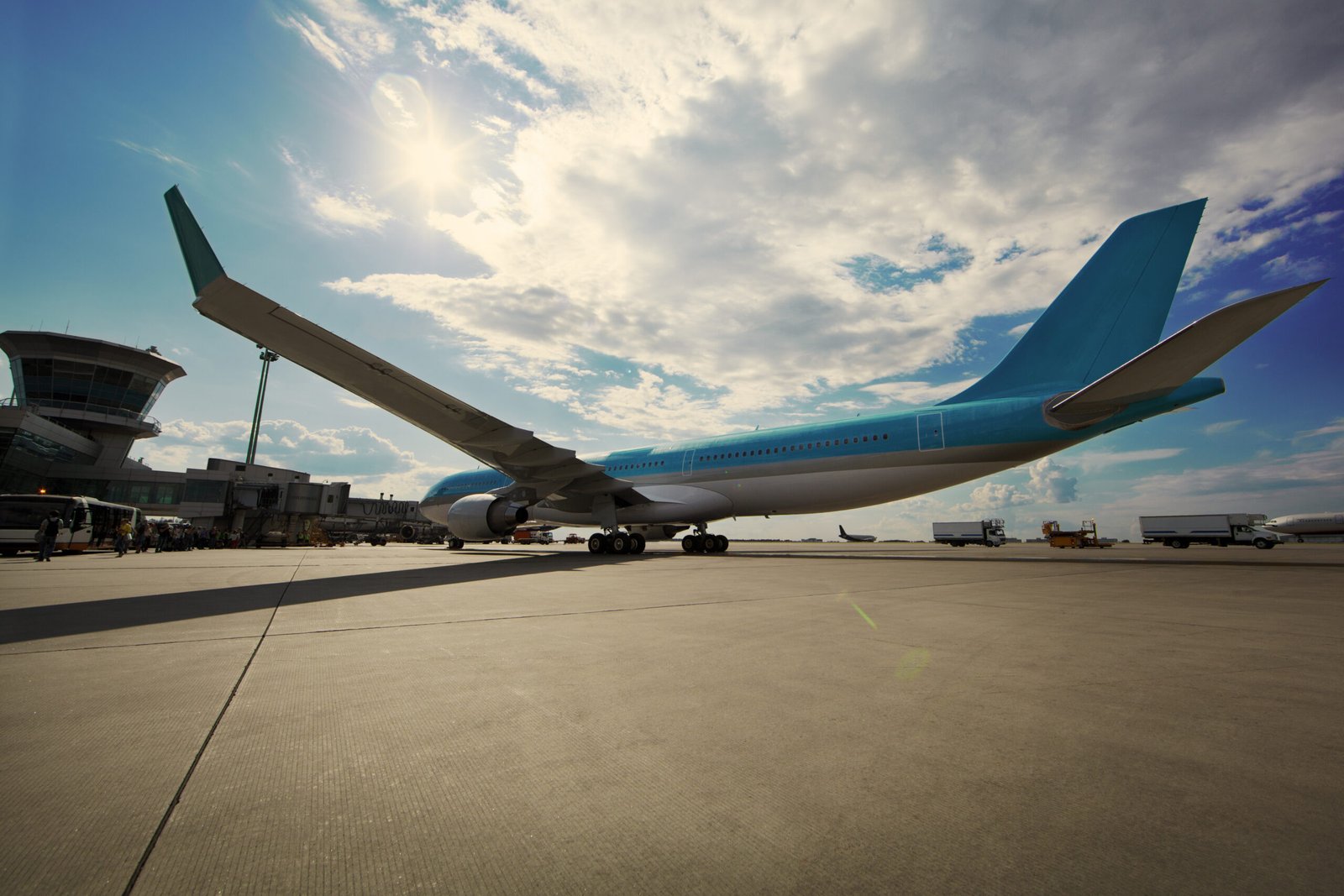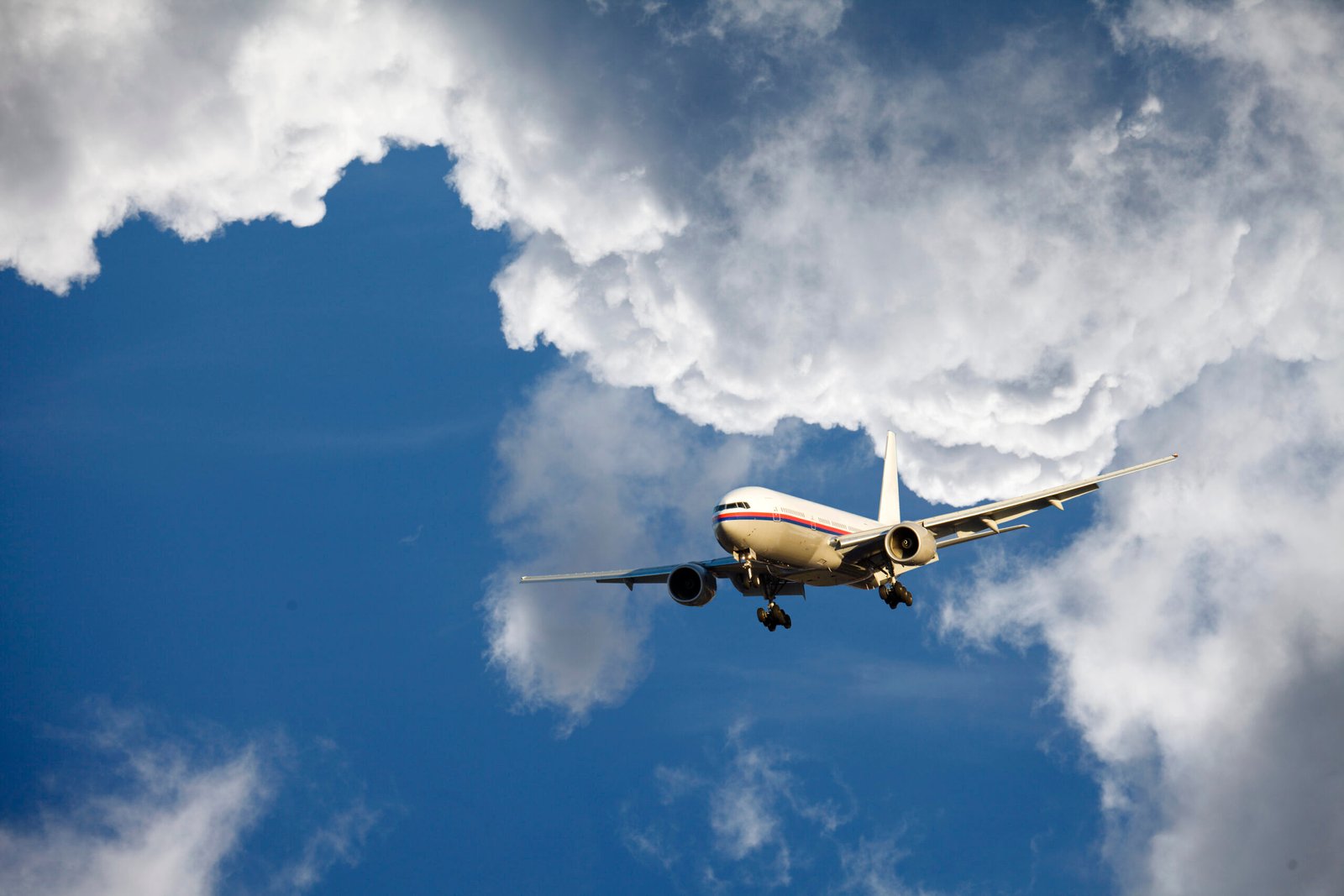Aviation Safety
Navigating the Skies: A Beginner’s Guide to Understanding Aviation
Embarking on a journey into the world of aviation can be exhilarating yet overwhelming. With so many paths one can take, it’s crucial to understand the various options available. From specialized schools to an abundance of online resources, this guide aims to illuminate your route through the skies.
### Types of Aviation Schools and Courses
When considering a career in aviation, the first step is selecting the right type of school. Here are some key categories:
1. **Flight Schools**: These institutions focus primarily on training pilots. They offer programs ranging from private pilot certificates to commercial licenses and even advanced ratings for instrument flying.
2. **Airline Transport Pilot (ATP) Schools**: For those aspiring to fly for commercial airlines, ATP schools provide intensive training specifically tailored for airline operations, including multi-engine flying and crew resource management.

3. **Aviation Maintenance Schools**: If you’re more interested in keeping aircraft in top shape rather than piloting them, consider enrolling in an aviation maintenance program. Here, students learn about airframe and powerplant systems, gaining skills necessary for FAA certifications.
4. **Aerospace Engineering Programs**: Universities often feature degree programs focused on aerospace engineering—perfect for those who wish to design and develop aircraft or spacecraft.
5. **Air Traffic Control Training Programs**: These courses prepare individuals for careers as air traffic controllers, teaching them how to manage aircraft safely within controlled airspace.
6. **Simulator Training Facilities**: Many flight schools now utilize advanced simulators that replicate real flying conditions without leaving the ground—ideal for practicing maneuvers or preparing for exams.
### Top Aviation Blogs and Websites
Staying informed about aviation trends is vital for any aspiring aviator or enthusiast. Here are some excellent blogs and websites worth bookmarking:
**AOPA (Aircraft Owners and Pilots Association)**: An invaluable resource packed with articles on flying tips, legal regulations, and industry news.
**Airliners.net**: A vast repository of photographs and forums where aviation enthusiasts share their experiences.
**Flying Magazine**: This publication covers everything from pilot techniques to product reviews.
**Pilot’s Digest**: A blog that offers insights into pilot life while emphasizing safety practices.
**AvWeb**: Focused on news relevant to pilots, AvWeb also features podcasts covering current topics in aviation.
For social media aficionados:
Follow hashtags like #aviationlife or #pilotlife on Instagram for stunning visuals from fellow aviators.
Join Facebook groups such as “Pilots Without Borders” or “Women in Aviation” to network with others who share your passion.
### FAA Flight Schools & Simulators
The Federal Aviation Administration (FAA) maintains a comprehensive list of accredited flight schools across the country—each providing different specialties tailored to student needs. When searching for a suitable school, look out for those that offer both ground instruction and simulator training; these elements combine theoretical knowledge with practical application effectively.

Moreover, utilizing high-quality flight simulators can significantly enhance your learning experience by allowing you to practice critical scenarios without real-world risks involved. Many reputable schools incorporate state-of-the-art technology into their curricula that mimic actual cockpit environments.
In conclusion, understanding aviation is not merely about dreaming of soaring through clouds but involves meticulous planning and education. By exploring various types of schools, engaging with numerous online platforms dedicated to this field, and taking advantage of FAA resources—and perhaps even virtual simulators—you’re well on your way toward conquering the skies! Remember that every seasoned pilot once started just where you are now—so buckle up; adventure awaits!
Aviation Safety: How Airlines Are Keeping You Safe in the Skies
In an age where air travel is more accessible than ever, the emphasis on safety remains paramount. Airlines around the globe are not only committed to providing comfortable flying experiences; they are also dedicated to ensuring that passengers arrive at their destinations safely. A crucial part of this commitment lies in the rigorous training and education of aviation professionals. Understanding how airline safety protocols are rooted in comprehensive aviation education can give travelers peace of mind.
Aviation schools play a pivotal role in shaping competent pilots, flight attendants, air traffic controllers, and maintenance technicians. These institutions offer a variety of courses tailored to different career paths within the industry. For instance, aspiring pilots typically enroll in programs focusing on flight training and aeronautical science. On the other hand, those seeking careers as flight attendants might pursue courses in customer service management and emergency procedures.
Moreover, specialized aviation maintenance programs equip students with the technical skills needed to ensure aircraft are safe for operation. Courses often include hands-on experience with simulators and real aircraft, fostering an environment of practical learning that is essential for maintaining high safety standards within airlines.
The Federal Aviation Administration (FAA) plays a significant role in regulating aviation education across the United States. The FAA certifies various flight schools and airplane training academies to ensure they meet strict safety guidelines. Many of these institutions offer advanced simulation training that allows students to practice navigating complex scenarios without leaving the ground. These simulators replicate real-life flying conditions closely, enabling trainees to hone their skills under controlled circumstances before taking off into actual skies.

Apart from formal education, staying informed about aviation safety trends is vital for both industry professionals and frequent flyers alike. Numerous blogs and websites serve as valuable resources for anyone interested in aviation topics ranging from safety innovations to regulatory changes.
For starters, **Air Safety Institute** provides insightful articles focused on enhancing pilot awareness regarding safety practices while flying. Similarly, **Flying Magazine** offers expert advice along with inspiring stories from seasoned aviators who share their experiences navigating the skies safely.
Social media platforms have also emerged as hubs for sharing knowledge about aviation safety. Following accounts like **@AvGeek** on Twitter or **FlyerTalk** on Facebook can keep you updated with real-time news about airline operations and emerging technologies aimed at improving passenger security.
Engaging with these communities not only broadens your understanding but fosters a culture where everyone shares responsibility for promoting safe travel practices within the industry.
As we soar through modern-day skies filled with advancements like predictive maintenance systems and enhanced cockpit technologies, it becomes evident that airlines prioritize safety above all else. The convergence of rigorous training programs offered by FAA-certified schools coupled with ongoing dialogue through blogs and social media ensures that both professionals and passengers remain informed about best practices in aviation safety.
Every flight embodies countless hours of meticulous preparation behind the scenes—from pilot training to engineering checks—all designed with one goal: keeping you safe as you embark on your journey through clouds high above our world. So next time you board an aircraft, take comfort knowing that a network of dedicated individuals has worked tirelessly to safeguard your experience aloft!
Aviation Safety: Innovations That Keep Us Flying Securely
In an era where aviation remains one of the safest modes of travel, ongoing innovations continue to enhance safety protocols and training. The journey towards ensuring secure air travel begins at the grassroots level, particularly within aviation schools that offer a diverse range of courses tailored to aspiring pilots, engineers, and air traffic controllers.
## Aviation Schools by Types of Courses
Aviation education is multifaceted, catering to various interests within the field. Several types of courses are available:
1. **Pilot Training Programs**: These fundamental programs teach students how to operate aircraft safely. They encompass private pilot licenses (PPL), commercial pilot licenses (CPL), and airline transport pilot (ATP) certifications.
2. **Aircraft Maintenance and Engineering**: Students interested in aircraft systems and maintenance can pursue technical diplomas or associate degrees in aviation maintenance technology. This area focuses on ensuring aircraft remain airworthy through rigorous inspections and repairs.
3. **Air Traffic Control**: Specialized courses train individuals to manage aircraft operations from the ground. These programs cover radar operation, communication protocols, and emergency response strategies essential for maintaining safe skies.

4. **Aviation Management**: For those drawn to the business side of aviation, management courses prepare students for roles in airport operations, airline management, and logistics.
5. **Safety Management Systems (SMS)**: Increasingly popular among airlines and regulatory bodies alike, SMS training emphasizes risk management principles designed to enhance overall safety culture.
## Lists of Aviation Blogs, Websites, Social Media Sites
As the industry evolves with new technologies and practices, staying informed is crucial for both professionals and enthusiasts alike. Here’s a curated list of valuable resources:
**Blogs**:
– *The Air Current*: Offers insights into airline strategy and market trends.
– *Airline Reporter*: A fun take on airline news with a focus on experiences.
– *Flight Chic*: Covers aviation fashion alongside industry news.
**Websites**:
– *FAA.gov*: The official site for updates on regulations and training requirements.
– *AvGeekery.com*: A community-driven platform celebrating all things aviation.
**Social Media Sites**:
– Follow hashtags like #AvGeek or #PilotLife on Twitter for real-time updates from pilots worldwide.
– Join Facebook groups dedicated to flight simulation or local flying clubs for networking opportunities.
## FAA Flight Schools/Airplane Schools/Simulators
The Federal Aviation Administration (FAA) plays a pivotal role in regulating flight schools across the United States ensuring that training meets high standards of safety. Enrolling in FAA-approved flight schools guarantees that students receive quality instruction aligned with national regulations.
Flight schools often incorporate advanced simulators into their curricula—an innovative approach that has transformed pilot training over recent years. Simulators mimic real-world flying scenarios without leaving the ground; this method allows novice pilots to practice emergency procedures safely while honing their skills under controlled conditions.
Additionally, many institutions offer online courses paired with hands-on flight time—a hybrid model that appeals especially during times when travel is restricted due to unforeseen circumstances like pandemics or natural disasters.
In conclusion, innovations in aviation education contribute significantly toward enhancing safety standards within the industry. By focusing on diverse course offerings, leveraging technology like simulators, and fostering an informed community through blogs and social media platforms, we can collectively ensure that as we soar higher into the skies—safety remains our foremost priority!
Sky High: The Evolution of Aviation Technology and Its Future
Aviation has long captivated the human imagination, soaring through the skies and connecting distant corners of the globe. The journey from wood-and-canvas biplanes to today’s sleek jets is a testament to human ingenuity. As we look ahead, it becomes clear that technology will continue to shape how we fly, learn about aviation, and navigate the future of aerial transport.

### Aviation and Technology Training
One of the most remarkable advancements in aviation is the use of flight simulators for training pilots. These state-of-the-art devices offer a safe environment where aspiring aviators can experience various flight scenarios without ever leaving the ground. From turbulence to system failures, simulators provide invaluable hands-on experience while minimizing risks associated with real-life training flights. By incorporating virtual reality (VR) and augmented reality (AR), these training tools are becoming even more immersive, enhancing students’ learning experiences.
### Online Resources for Aviation Enthusiasts
The digital age has birthed a plethora of resources for aviation aficionados. Whether you’re a seasoned pilot or someone simply interested in flight mechanics, there are numerous blogs, websites, and social media platforms dedicated to this fascinating field. Here are some noteworthy mentions:
1. **Airliners.net** – A robust forum for aviation enthusiasts where you can share photos and experiences.
2. **The Points Guy** – Offers insights into maximizing frequent flyer miles while traveling.
3. **Fly Away Simulation** – A hub for flight simulation enthusiasts featuring news on software updates.
4. **Pilot’s Digest** – Covers everything from industry news to tips for aspiring pilots.
5. **Social Media Groups** – Platforms like Facebook have numerous groups such as “Aviation Enthusiasts” where members share stories, news articles, and personal experiences.
These online communities serve as an amazing source of information and inspiration.
### Learning Opportunities: Online Courses & Ground Schools
For those looking to embark on a career in aviation or simply expand their knowledge base, several online courses and ground schools are available today. Organizations like Coursera and Udemy offer comprehensive classes covering topics from aerodynamics to air traffic control procedures. Moreover, institutions like Embry-Riddle Aeronautical University provide specialized programs tailored for both new pilots and industry professionals seeking certification or advancement in their careers.
With remote learning now more accessible than ever, aspiring pilots can balance education with other commitments without compromising quality.
### Career Pathways: Becoming a Pilot

Pursuing a career as a pilot is an exciting prospect that requires dedication and skill development. After completing appropriate training programs—including Private Pilot License (PPL) or Airline Transport Pilot License (ATPL)—the next step often involves accumulating flight hours through various jobs such as flight instructing or flying charters before landing positions with airlines or cargo companies.
The demand for qualified pilots continues to grow globally—an encouraging sign for those considering this profession!
### The Rise of Drones
In recent years, drones have transformed not only recreational flying but also commercial applications within aviation sectors such as delivery services, agriculture monitoring, and surveillance operations. As regulations evolve—thanks largely to guidance from organizations like the FAA—the drone industry is expected to expand exponentially in various sectors while ensuring safety remains paramount.
#### Final Thoughts
As we gaze into the horizon of aviation technology‘s future landscape feels promising yet unpredictable; however one thing remains certain—the blend between innovation-driven solutions alongside traditional methodologies will define how we navigate our skies moving forward! For anyone passionate about flight—whether through piloting aircraft themselves or embracing technological advances—a world full of opportunities awaits!
From Pilot to Passenger: Understanding the Evolution of Aviation Safety
Aviation safety has come a long way since the early days of flight. As technology advances, so does our understanding of how to keep both pilots and passengers safe in the skies. Today, aspiring aviators can benefit from a wealth of resources, including online aviation courses and ground schools that equip them with vital knowledge and skills. Let’s dive deeper into these options and explore how they contribute to the evolution of aviation safety.

Online aviation courses have revolutionized pilot training by making education more accessible than ever. Platforms like Coursera, Udemy, and specialized aviation sites offer programs covering everything from aerodynamics to navigation systems. These courses are designed for busy individuals who may not be able to attend traditional classroom sessions. By providing flexibility, learners can study at their own pace while honing essential piloting skills.
Ground schools play an equally crucial role in preparing pilots for the skies. Typically held in-person or through hybrid models, these schools provide a structured environment where students learn about aircraft systems, weather patterns, and regulations set forth by organizations like the FAA (Federal Aviation Administration). Ground school is particularly significant because it lays the foundation for safe flying practices; it teaches students about risk management—how to assess potential hazards before they lead to incidents.
As you delve deeper into your journey towards becoming a pilot, connecting with others in the field can be incredibly beneficial. Aviation forums and communities serve as invaluable resources for both novice and experienced pilots alike. Websites like PPRuNe (Professional Pilots Rumour Network) or AvGeek forums allow users to ask questions, share experiences, and exchange tips on various aspects of flying—whether it’s dealing with air traffic control or understanding complex regulations.
Moreover, engaging with fellow enthusiasts fosters camaraderie within the aviation community. Online platforms such as Reddit’s r/flying or Facebook groups dedicated to specific aircraft types offer real-time discussions about trends in aviation safety procedures or updates on new technologies. Such interactions often lead to insights that could significantly enhance one’s knowledge base while emphasizing a culture of learning among peers.
In addition to forums, several blogs and websites cater specifically to those interested in all things aviation-related. For instance:
1. **AirlineReporter** – Focused on airline news and travel experiences.
2. **FlightGlobal** – Offers extensive coverage on industry happenings.
3. **The Flying Magazine** – A staple for general aviation enthusiasts.
4. **AOPA (Aircraft Owners and Pilots Association)** – Provides resources for pilots at all levels.
Don’t overlook social media either! Twitter accounts like @FltOps (@FlightOperations) provide timely updates about operational changes while Instagram profiles such as @pilotlife showcase breathtaking views from cockpits around the world.
As we continue evolving our understanding of aviation safety—from innovative training methodologies in ground schools to thriving online communities—the importance of shared knowledge cannot be understated. The tools available today empower aspiring pilots not just with theoretical insights but also foster connections that enhance practical experiences.
Ultimately, whether you’re navigating through an online course or exchanging stories on an aviation forum, one thing remains clear: collective learning elevates our commitment towards ensuring safer skies for everyone—transforming every passenger journey into a testament of progress achieved through collaboration and innovation in this remarkable field called aviation!




